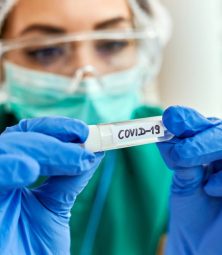Covid 19 FAQ
- Home
- Covid 19 FAQ




FAQs
After detection of a widespread new ‘double mutant’ variant B.1.617 in Delhi, Maharashtra and some other places, now a triple mutation B.1.618, meaning three different COVID strains combining to form a new variant, has been detected in some parts of the country.
It is believed that the states like West Bengal, Maharashtra and Delhi have COVID-19 cases driven by this new triple mutant. Experts believe mutations are driving fresh infection spikes, not just in India but across the world.
How infectious the triple mutation is, or how deadly, will be known only from more studies. Virus genome studies would need to be done to detect these mutations.
For now, the triple mutation has been classified in India as a ‘variant of interest’ rather than ‘variant of concern’. As per experts, the new triple mutant variant is more transmissible and is making many people sick very quickly. Experts believe mutations are driving the fresh infection spikes, not just in India but across the world.
How deadly or infectious this new triple mutation is will be known only after some more studies.
There is a resurgence of COVID-19 cases in India. There are several reasons for the rapid spread of this virus. Some of them are:
- Complacency: The biggest reason for a sudden surge in COVID-19 cases is complacency among citizens required to follow COVID-19 guidelines. Not wearing a mask or maintaining social distance in public places has resulted in many people getting infected.
- Variants: The second wave of COVID-19 is largely caused due to new variants of the coronavirus. These variants are more infectious than the original virus.
India’s COVID-19 trajectory has been steadily increasing in the past several days. We have crossed more than 16 million cases this month. As the second wave intensifies in the country, we may interpret COVID-19’s resurgence in the following manner:
- The second wave of COVID-19 is largely caused due to mutations in the COVID-19 virus. These mutations are highly infectious and deadlier than the original virus.
- Maharashtra, Punjab, Kerala, Karnataka, and Chhattisgarh account for over 80 percent of the total cases.
- The resurgence has come around a time when vaccinations are being rolled out. This has prompted the government to begin vaccinations for people above the age of 45 in April, and from May 1, it will be available for everyone above the age of 18.
No vaccine is 100% effective, providing complete immunity. It is essential to understand that leading vaccines have an efficacy of 95%. That means even after being fully vaccinated, you may contract an infection.
The chances are extremely low, though, about 0.03-0.04% of the total population vaccinated. But the good news is, the symptoms will be very mild, and the disease will not become a life-and-death situation.
Researchers from the John Hopkins Center for Health Security say that it is essential to understand the timeframe of infections. An infection that occurs two weeks after both the doses are administered is considered a breakthrough. We should give our bodies at least two weeks to develop antibodies against the SARS-Cov-19 infection.
Therefore, vaccination is the most effective solution in controlling the spread of COVID-19, and we must all contribute by taking our doses in a timely way.
Multiple researchers have concluded that the Reverse Transcriptase PCR test conclusively determines if a patient has COVID-19. But depending on the laboratory testing conditions, other logistical factors, duration of symptoms, viral loads, and test sample quality, it has shown varying results.
Multiple other options, such as the Rapid Antigen Assessment (RAT) or the CO-RADS score, are available, but RT-PCR remains an end tool for definitive diagnosis.
An important issue with the real-time RT-PCR test is the risk of false negatives and false positives. It remains the Gold standard in testing.
Moreover, real-time RT-PCR has adequate sensitivity to help diagnose infection early. Therefore, the criterion-referenced real-time RT-PCR assay can be considered the main method to detect the causative agent of COVID-19.
- A balanced diet: Try to include all types of vitamins and minerals as much as possible in your diet. Eat vitamin C & D rich food, especially to safeguard yourself from COVID-19. Eat green vegetables and fruits. Include protein and carbohydrates also for energy.
- Improve your daily lifestyle by:
- Having at least 8 hours of good sleep to avoid infections and diseases.
- Doing meditation at least for 20 mins daily to keep your mind healthy. Meditation keeps your blood pressure and heart rate in control and also reduces anxiety.
- Doing Yoga and exercises will increase your breathing capacity and strengthen your immunity to fight against infections. Don’t forget to include breathing exercises for healthy lungs.
- Have a positive attitude: It’s rightly said that we experience what we manifest. Spread as much positivity as you can. After all, a healthy body resides in a healthy mind.


